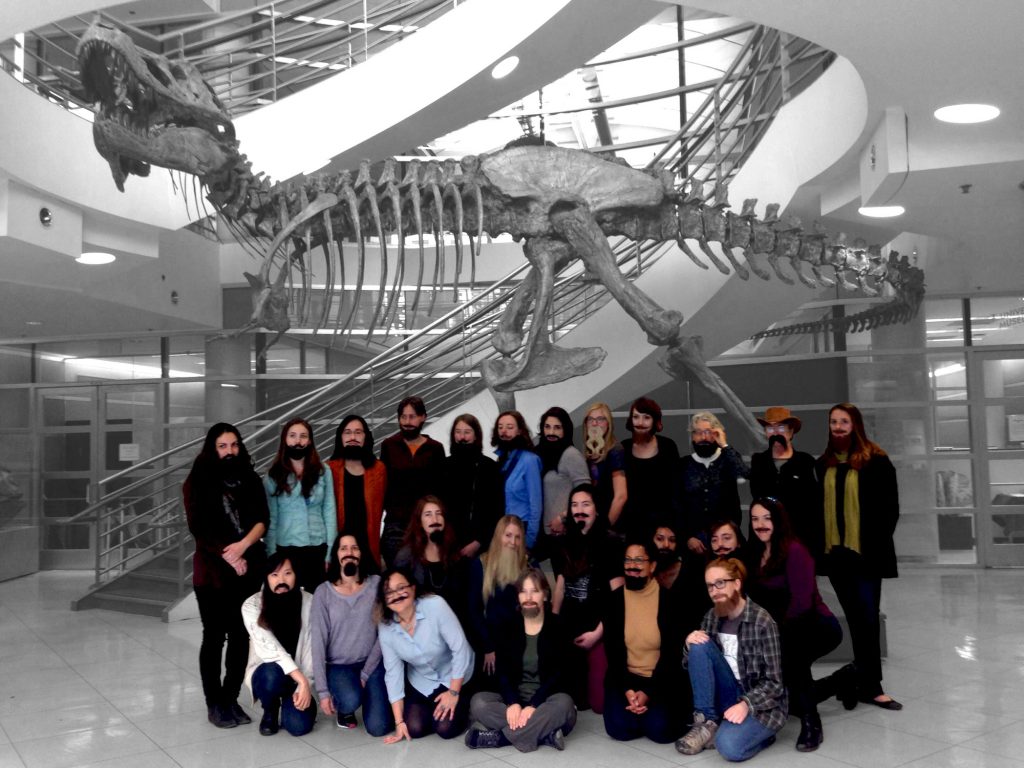
In February 2015, The Bearded Lady Project film and photography team boarded a plane and flew to San Francisco. They were carrying a peculiar cargo: 30 beards and mustaches that they picked up at their regional theater prop shop. During their three days on the UC Berkeley campus at the UC Museum of Paleontology (UCMP), they interviewed and photographed about 30 UCMP paleontologists wearing beards. The participating UCMP graduate students, faculty members and museum scientists all had one thing in common — they were all women. This was the start of Berkeley’s involvement in the Bearded Lady Project, which culminated in a traveling photo portrait exhibit of women doing field-based research, and a feature-length documentary film that premiered in Berkeley a few weeks ago. A festive event for scientists and the general public around the documentary premiere (co-organized by the UCMP and the Lawrence Hall of Science) attracted quite a bit of publicity. Unfortunately, some media outlets missed what the Bearded Lady Project exactly entails and reported that at UC Berkeley, female scientists started to wear beards to work in protest of the existing gender biases in the sciences. This is at best partly true, but then what is the Bearded Lady Project exactly?
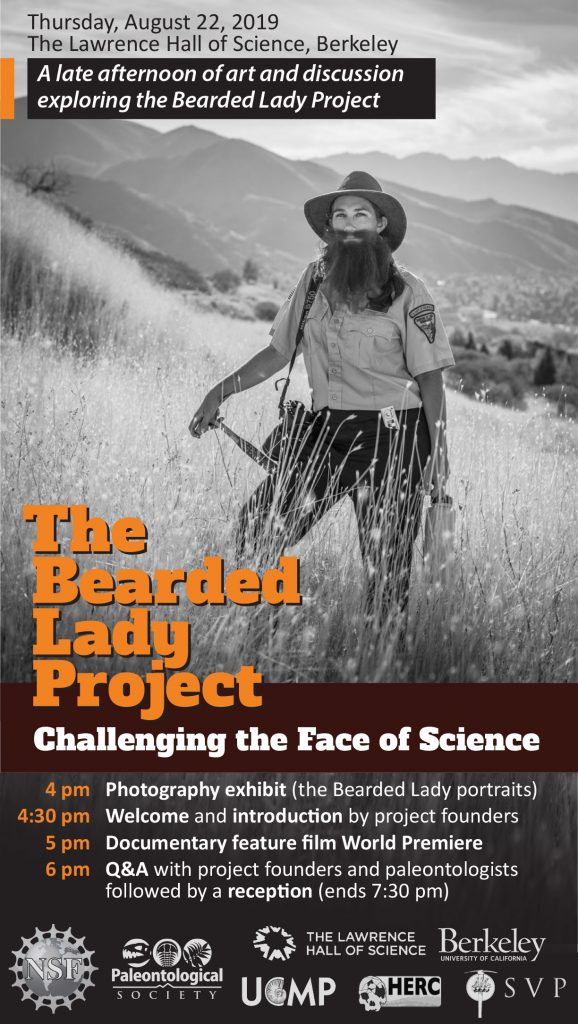
The Bearded Lady Project — a brainchild of paleobotanist Ellen Currano and filmmaker Lexi Jamieson Marsh — aims to challenge tenacious gender biases in the sciences, specifically paleontology. It started one night when Ellen was complaining to Lexi how she, being the only young and female faculty member in the department where she was working at the time, was not taken seriously by her colleagues. Ellen lamented that if she had the right amount of facial hair, perhaps her colleagues would appreciate her opinion? When Ellen woke up the next morning she saw that Lexi had sent her a message saying: let’s do this. Let’s get beards. Thus was the inception of the Bearded Lady Project.
In 2014, Ellen and Lexi teamed up with fine arts photographer Kelsey Vance and director of photography Draper White, and began travelling around the country (and abroad) to photograph, film and interview paleoscientists in the field and in their labs, to highlight the work they do, and to tell their stories of how they got where they are now. As mentioned, the project consists of two parts: (1) the feature film celebrating the unsung achievements of the many paleontologists who happen to be women and revealing the obstacles they faced because of their gender; and (2) a photography exhibit that — with a positive dose of wit — makes short work of the burly bearded male stereotype that has dominated the professional landscape of field-going scientists for far too long. A total of 15 of the bearded UC Berkeley paleontologists are featured in nine of the 39 black-and-white portraits in the touring exhibit. The beautiful photographs — many of them out in the field: deserts, mountains, badlands and mudflats; all shot with vintage large-format cameras — intentionally take us back to the early days of photography of paleontological field expeditions, more than a century ago. The historic photographs (almost without exception) depict rough-looking, old, long-bearded white dudes, wielding pick axes and shovels, loading fossils on mule trains — a stereotype that persists today, even though this is not at all what the field (and our field) looks like nowadays.
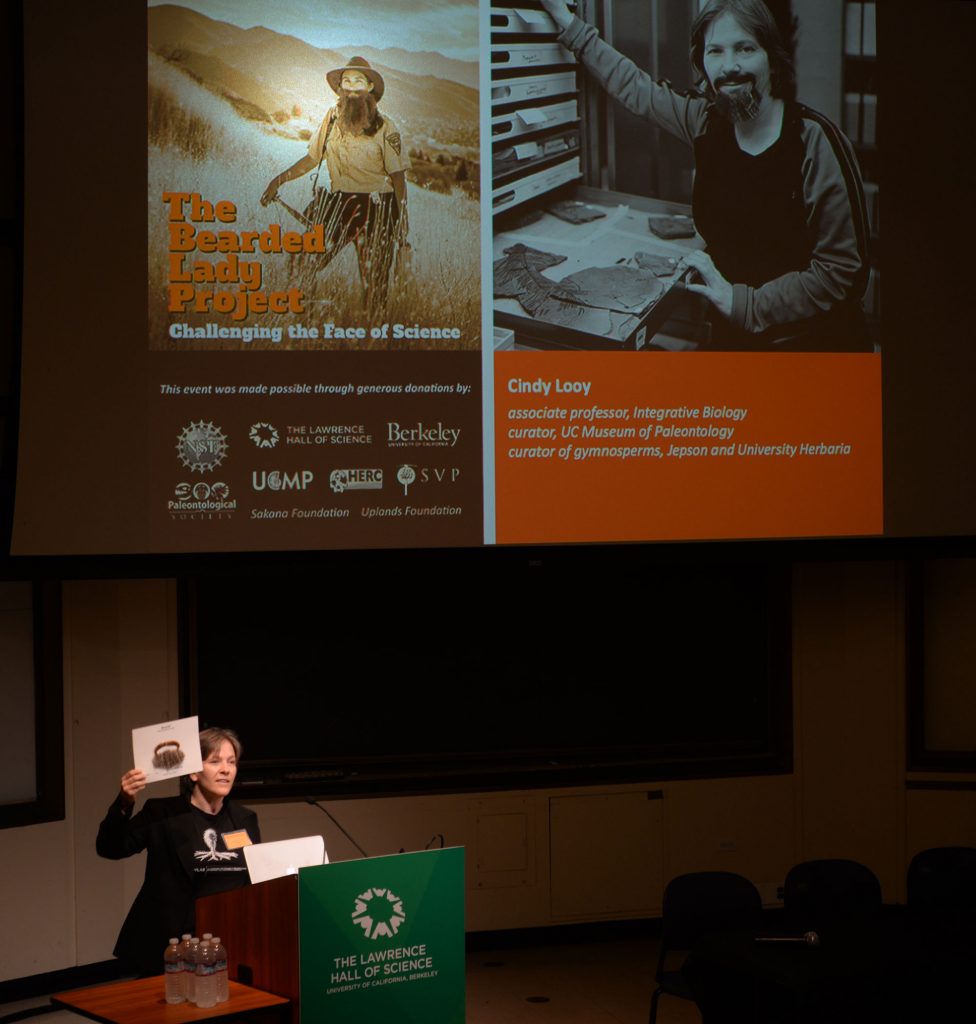
The exhibit makes fun of the male paleontology stereotype, but without explicitly stating so. It proves to evoke many questions in the beholders. Is it strange to glue beards on paleontologists in the field and photograph them? — Perhaps. Is it silly? — Probably, yes. So gender bias is not a serious issue? — Why would it not be? Many serious matters are more efficiently tackled with a teaspoon of humor. Does it suggest gender should be a strictly binary matter? No, why would it? Women wearing beards; what does it mean exactly? — Why would it have to represent one single thing? It is thought provoking, a great conversation starter, and fun to look at. People can make up their own minds, and if not, it is perfectly fine to remain slightly confused!
On Thursday August 22, 2019 Berkeley had the honor of hosting the world premiere of the full-length Bearded Lady Project feature film at the Lawrence Hall of Science. The 100 people in the audience got to see how the film prominently features our very own Dr. Carole Hickman and Dr. Lisa White. It was impressive to see how moved many in the audience were by all the deeply personal stories that the portrayed paleoscientists in the film shared. Everyone has their own private story to tell.
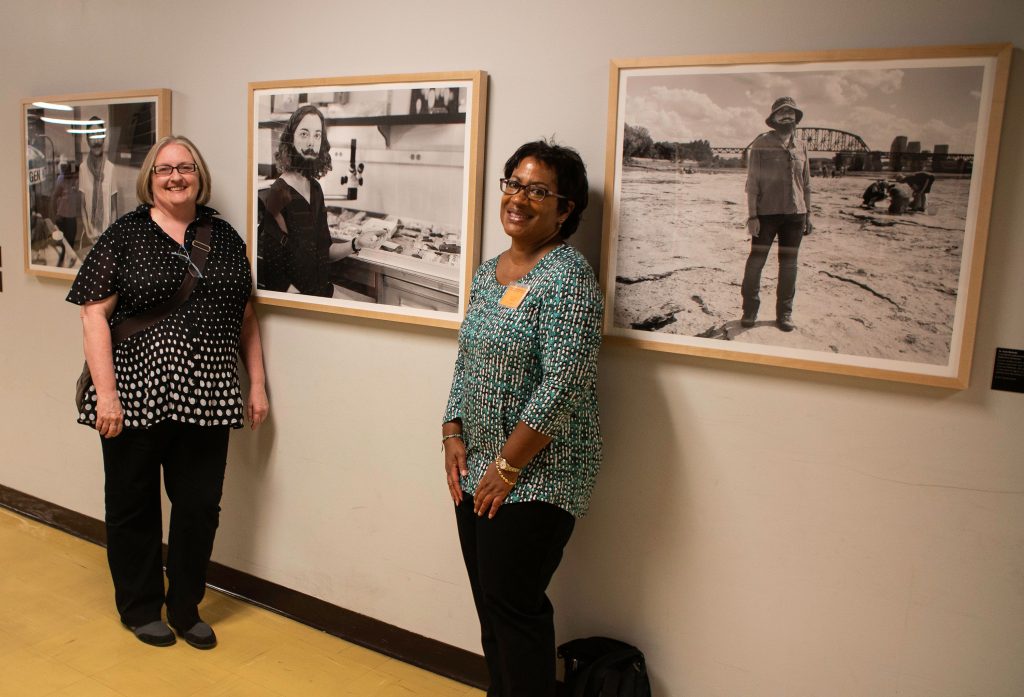
The documentary was followed by a lively panel discussion, led by Dr. Leslea Hlusko with the Bearded Lady founders, UCMP senior museum scientists Drs. Pat Holroyd and Ashley Dineen, and UC Davis paleoscientist, geochemist ,and former President of the Geological Society of America Dr. Isabel Montañez. Drs. Lisa White and Carole Hickman from UCMP were later added to the panel. A very memorable moment was the discussion of Imposter Syndrome: “a psychological pattern in which an individual doubts their accomplishments and has a persistent internalized fear of being exposed as a ‘fraud’ ” (Wikipedia, 09/06/2019) — an unjustified, but debilitating condition much more common than most of us may realize, which only becomes too obvious when people get together and share their stories. To us, the response of the participants in the event laid bear the two most valuable aspects of the Bearded Lady Project: (1) simply for the first time providing a platform for woman in the paleosciences to share their stories — many of which very relatable, as they contain elements from our own past experiences that we may or may not have shared with others. And (2) forging a strong sense of community. As such, we feel grateful that Ellen and Lexi have presented our community with such a wonderful gift.
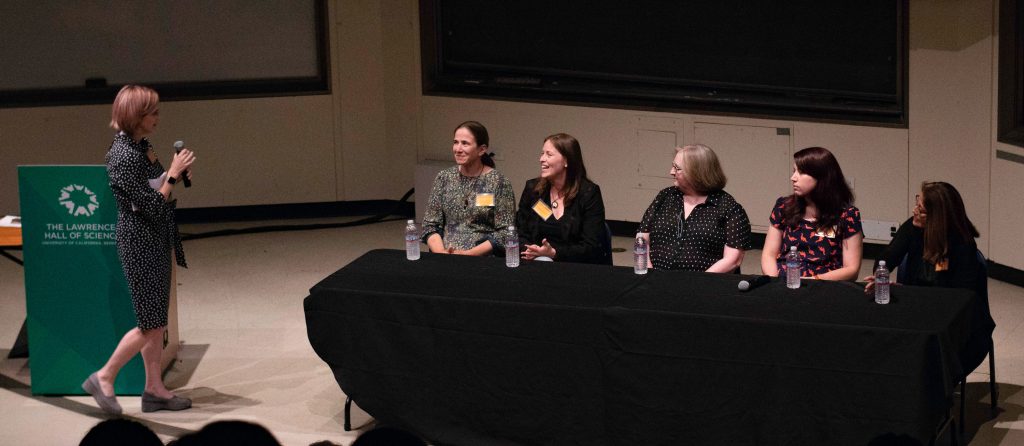
To find out more about The Bearded Lady Project, please visit the project website https://thebeardedladyproject.com/
—
A special thanks to the Lawrence Hall of Science and our sponsors (the UCMP, the Human Evolution Research Center, the Department of Integrative Biology, the Department of Gender and Women’s Studies, the Media Studies Program, the Dean of Biological Sciences’ office, the Office of the Vice Chancellor of Research, the Sakana Foundation, the Uplands Foundation, and the Society of Vertebrate Paleontology), Bob Sanders from the UC Berkeley Office of Communications and Public Affairs, and all the participants for supporting the August 22, 2019 event!